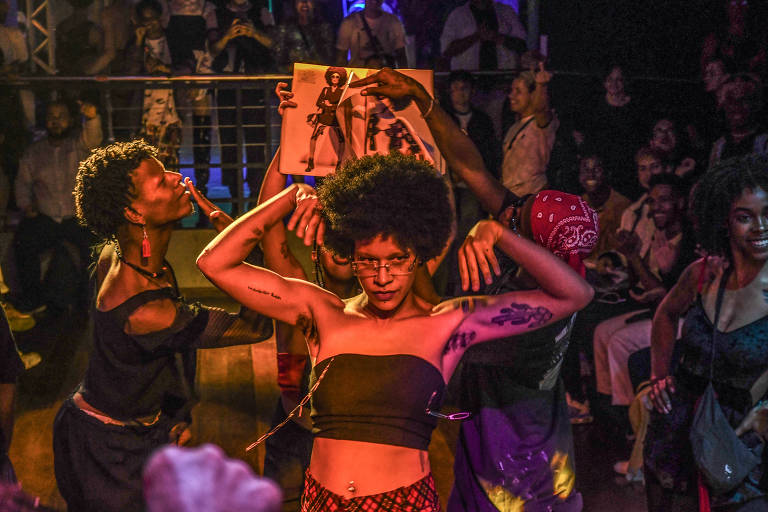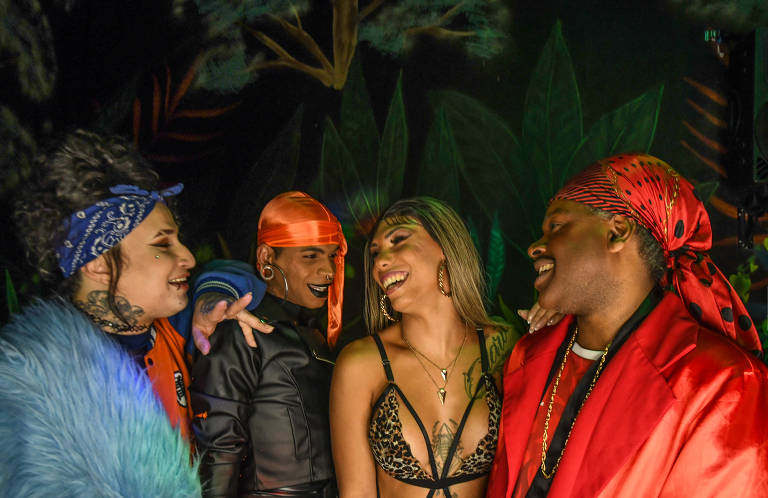There is a place where Black LGBTQIA+ people are free. It’s a space where they are respected and admired, and where they can be recognized and celebrated through art. This place of gathering and celebration is called Ballroom.
The Ballroom scene was born over half a century ago in the United States as a space for leisure, artistic experimentation and resistance to violence and discrimination. It all started with Crystal LaBeija, the founding mother of Ballroom culture. Outraged by racist antics in the drag pageant scene, she decided to organize the first Ball for Black and Latino LGBT+ folks in 1972.
Going to a Ball is a unique experience. It’s a thrilling spectacle that blends elements of fashion shows, drag shows and, of course, epic vogue battles. Voguing is a performative dance style born in the Ball rooms of Harlem, in New York City.
Ballroom has a special place in pop culture. Beyoncé references Ball culture in her latest album, "Renaissance". In 1990, Madonna released her hit song "Vogue".
The scene has also inspired the TV series "Pose", the reality competition show "Legendary" and the documentary "Paris is Burning", a queer classic.
As such, Ballroom has become a global phenomenon that livens up the nightlife from Paris to Lagos to Tokyo. The movement has taken root in Brazil throughout the last decade and has quickly spread to every region in the country, where it is reinventing itself thanks to a new generation of trans and Black artists.
On July 31st, the Ballroom community got together in São Paulo for a very special occasion: the Pioneer Ball, an event in honor of the pioneers who created the scene. "We are here to celebrate our living ancestry", declares Juani Hands Up, the host of the event.
In this ball, the judges are pioneers, a title reserved for those who created the Ballroom scene from scratch. They are undisputed leaders of the community.
One of the judges is Félix Pimenta, a trailblazing artist who promotes Ball culture in São Paulo through parties such as Amem, Batekoo and the Black Pride. Another judge is Ákira Avalanx, known for giving free vogue classes in Anhangabaú, in the heart of the city.
The last judge is Fênix Mandacaru, who brought Ballroom to Brazil’s Northeast region. They are also one of the main references in academic research about the scene. "The time has come for the new generation to learn our name and legacy. That’s why we are throwing this ball", says Fênix.
The audience is fired up as the judges make their introductions and DJ Luwa Cheia drops the beat, when Juani, the host of the event, announces the opening of one of the most awaited categories of the night: old way, the classic way of voguing.
Precision is the key to excel in this category, where competitors execute linear, symmetrical and angular movements with their arms and legs.
During their performance, Jessy Velvet holds copies of the Vogue magazine. This is a tribute to the pioneer Paris Dupree, who innovated New York’s Ballroom scene in the 80's by choreographing the poses of the models in fashion magazines such as Vogue. That’s how voguing was born.
Jessy says their art is located at the intersection between the traditional and the futuristic. For them, Ballroom is in 2070.
Next, it’s time for vogue femme, a more contemporary genre of voguing that turns up the level of drama in the performance.
The audience goes crazy when the artists do a dip, where they suddenly plunge their body backwards and land on their backs with a leg stretched upwards. It’s a risky, bold and iconic movement.
The artists give their sweat, blood and tears to honor the pioneer Eduarda Kona, who’s at the Pioneer Ball as chanter. "I’m glad to receive this homage while I’m still alive", she tells the audience, laughing.
In 2015, Kona founded the House of Hands Up, the first of many houses of the Ballroom community in Brazil. Houses are artistic collectives as well as adoptive families for LGBT+ youth who got kicked out from their homes.
The House of Hands Up was born in Brasília and recently opened a new chapter in São Paulo. Their first event in the city was the Pioneer Ball.
Events like this one are usually organized independently and without sponsors, says Jô Gomes, the executive producer of the Pioneer Ball. She says public and private institutions should do more to support cultural initiatives created by historically marginalized groups.
Ballroom culture has developed a life of its own in Brazil by blending with other afro-diasporic traditions such as capoeira and funk.
Last April, the first Indigenous Ball took place in Brasília. Rio de Janeiro’s Ballroom scene is featured in Globoplay’s docuseries "Hold That Pose", set to be released next year.
At the Pioneer Ball, the announcement of a surprise category suggests a bright future for the scene.
With 15 people walking, almost half of the total of competitors in the evening, baby vogue is the most competitive category. The beginners demonstrate stamina and talent to keep the Ballroom scene alive.
One of them is Pieel. With a smile on his face, he charms the jury in his first performance at a Ball and brings home the category’s trophy.
"This victory means a lot to me because tonight’s judges are pioneers. They are the ones who started everything", he says.
Looking forward, Pieel sees a bustling scene with financial support and events all over the country. "For many, Ballroom is like therapy. It’s a safe haven."




